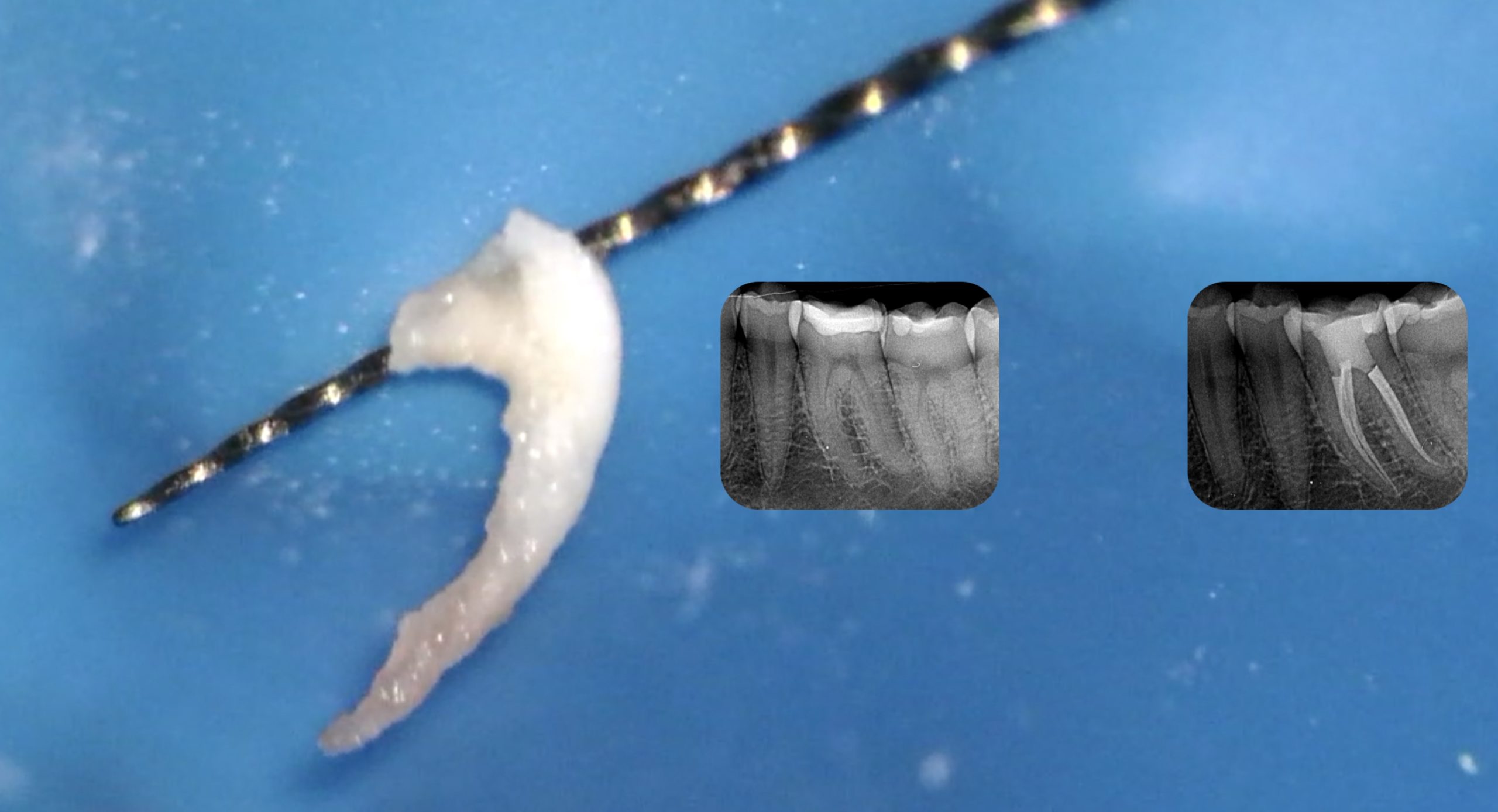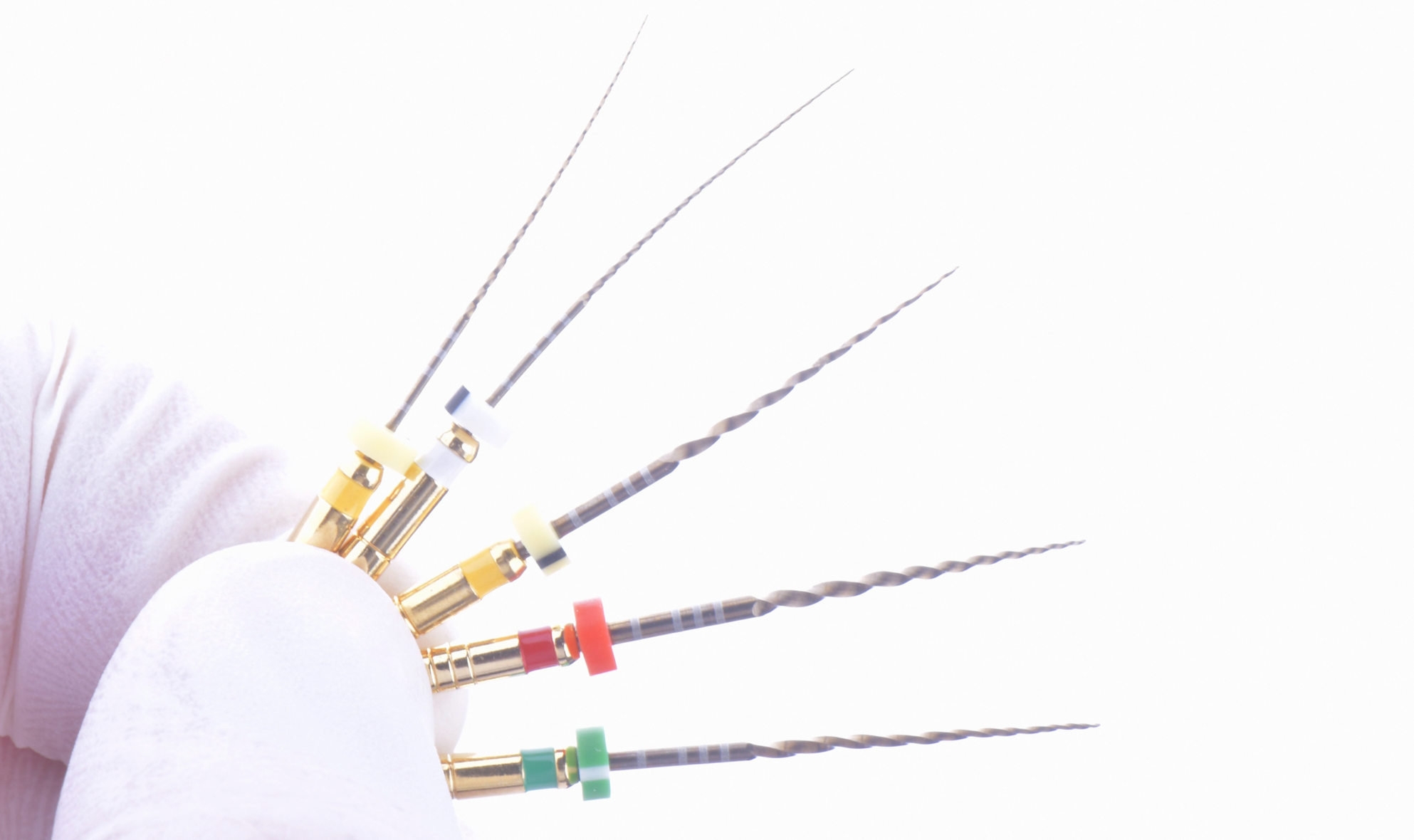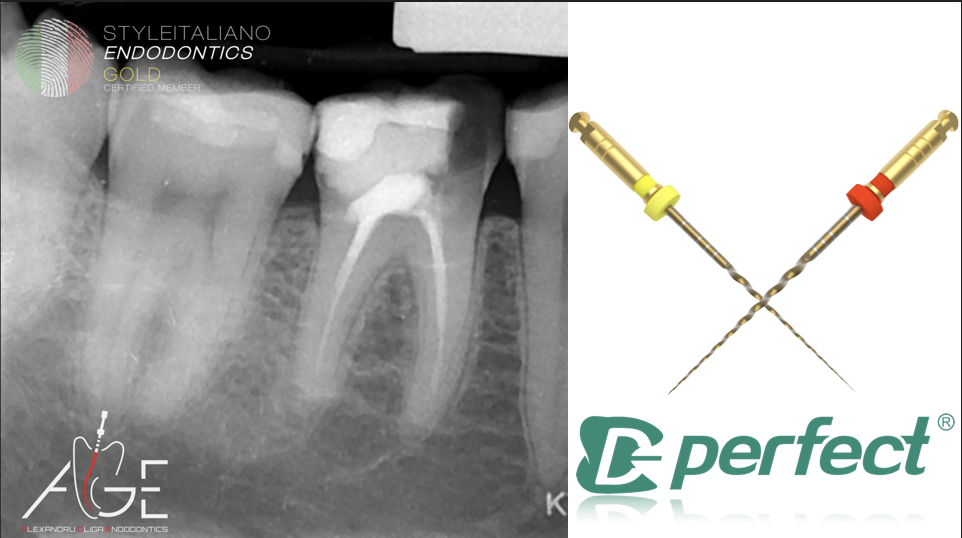
Root canal retreatment of a LR6 using MG3 File System from Perfect: a case report
24/11/2022
Alexandru Gliga
Warning: Undefined variable $post in /var/www/vhosts/styleitaliano-endodontics.org/endodontics.styleitaliano.org/wp-content/plugins/oxygen/component-framework/components/classes/code-block.class.php(133) : eval()'d code on line 2
Warning: Attempt to read property "ID" on null in /var/www/vhosts/styleitaliano-endodontics.org/endodontics.styleitaliano.org/wp-content/plugins/oxygen/component-framework/components/classes/code-block.class.php(133) : eval()'d code on line 2
Root canal retreatments always represent a hot topic.
Whether the preoperative X-ray informs on a difficult retreatement or not, choosing the right armamentarium is crucial and can help the clinician in reaching the working length and remove the obturation materials. The disinfection of the endodontic system plays a key role in the treatment outcome, however, without an efficient removal of the old materials from inside the root canals, the irrigants can not be adequately delivered. Hence it is mandatory for clinicians to adapt to each clinical situation and choose the correct approach and instruments.

Fig. 1
A 47 years old patient was referred to our office by his general dental practitioner for endodontic retreatment. He complained about biting tenderness associated with tooth 46.
The access cavity was driven by the removal of the occlusal temporary filling and the infected dentine.
The MG3 file system from Perfect was chosen for managing this case.

Fig. 2
12A metal clamp was used to secure the rubber dam
Liquid dam was needed to obtain isolation
Instrumentation sequence:
- MG3 ST
- MG3 G1
- MG3 G2
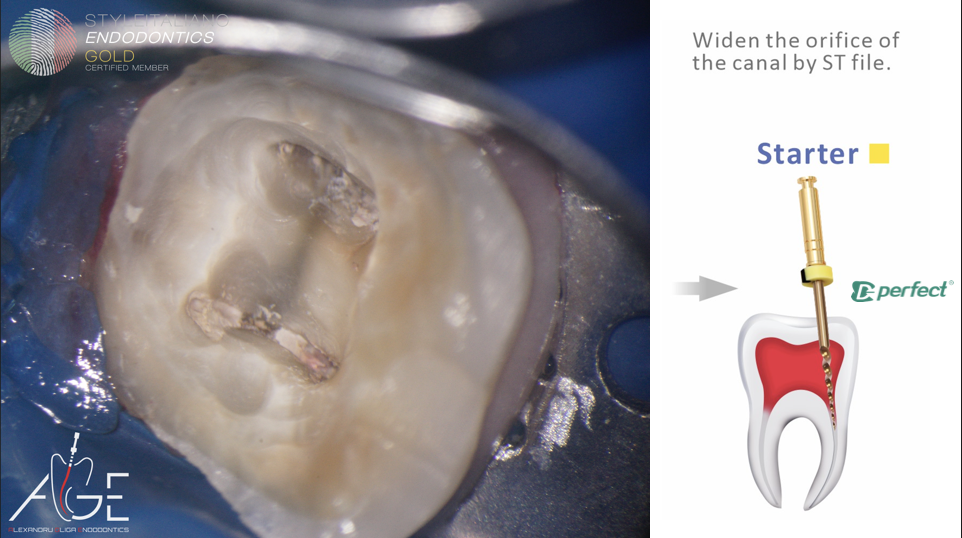
Fig. 3
ST file was used to widen the orifice
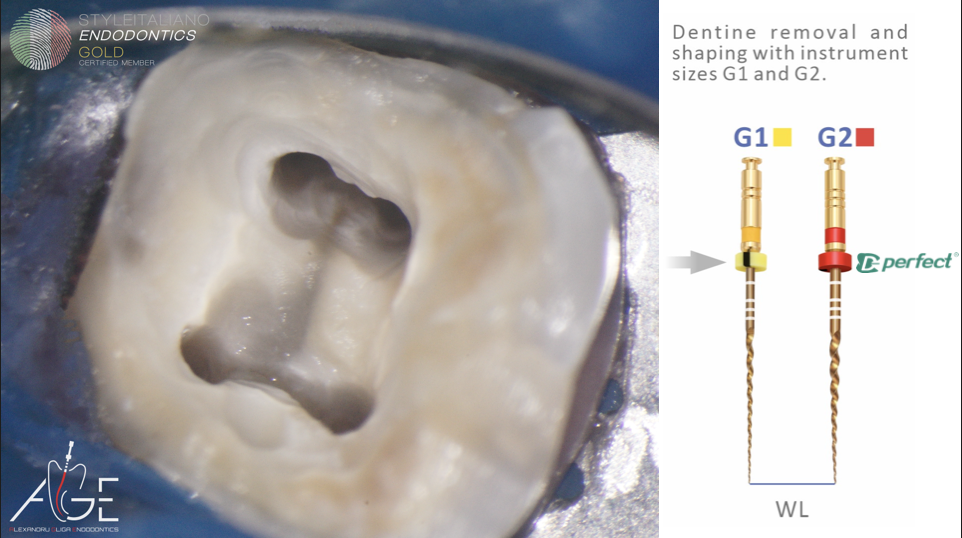
Fig. 4
G1 and G2 are the shapers used to remove the dentine
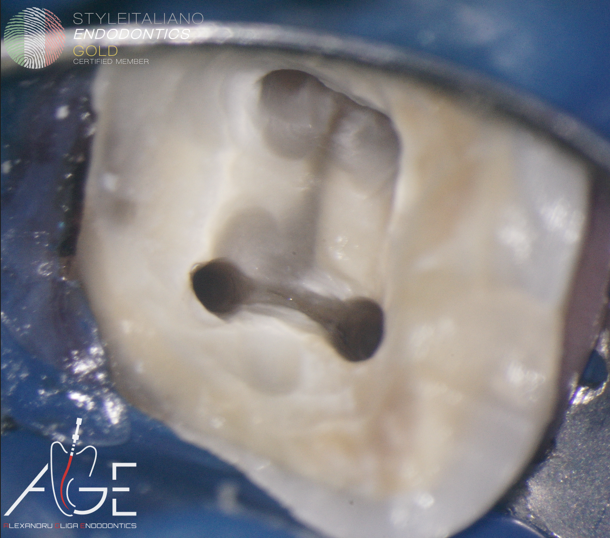
Fig. 5
Aspect of the mesial canals orifices after RCT

Fig. 6
Aspect of the distal canals orifices after RCT
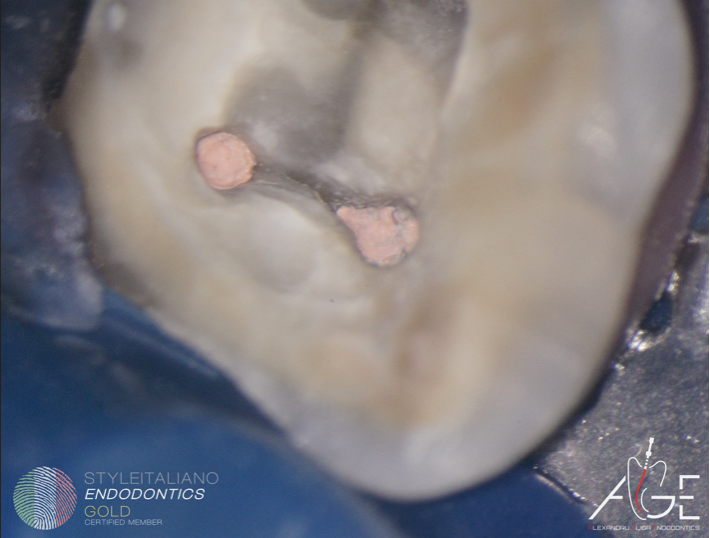
Fig. 7
Vertical warm condensation technique was performed to obturate the canals
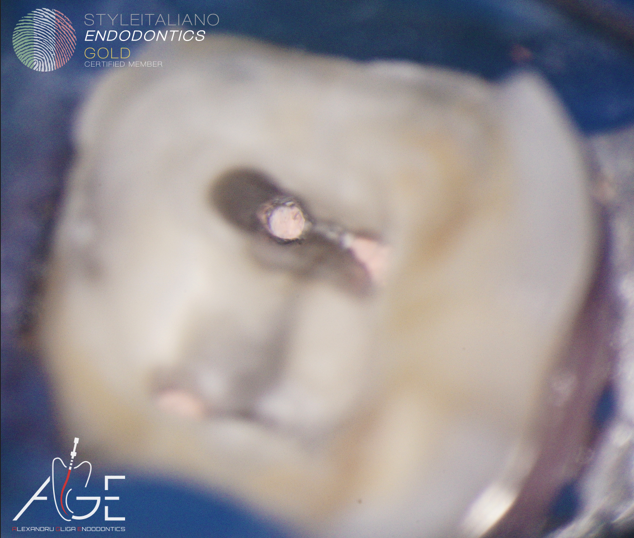
Fig. 8
A fiber post was placed inside the DL canal

Fig. 9
Core build up
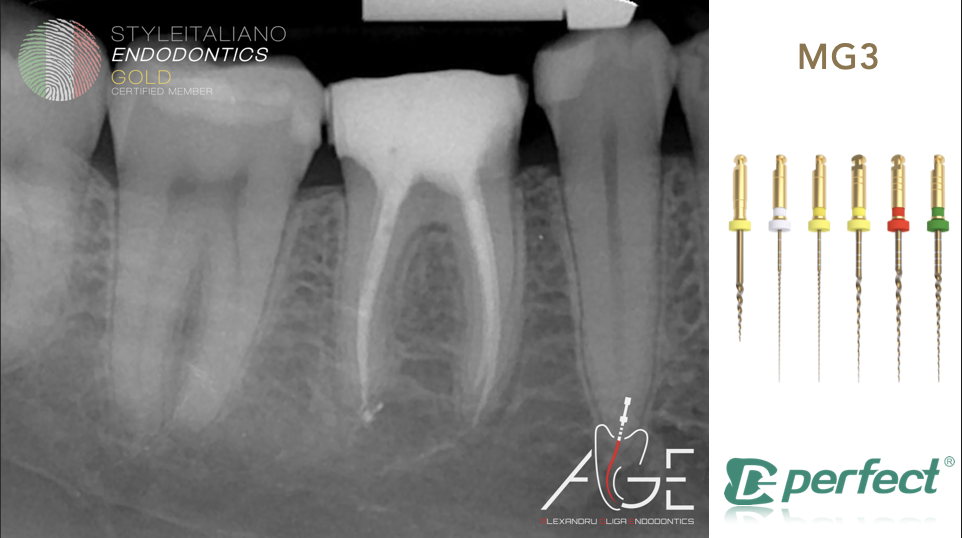
Fig. 10
Post operative x-ray.
Conclusions
The MG3 system can be an excellent choice for the management of retreatment cases.
Bibliography
Alapati SB, Brantley WA, Iijima M, Clark WA, Kovarik L, Buie C, et al. Metallurgical characterization of a new nickel-titanium wire for rotary endodontic instruments. J Endod. 2009;35(11):1589–93;
Farzaneh, M., Abitbol, S. & Friedman, S. 2004, Treatment Outcome in Endodontics: The Toronto Study. Phases I and II: Orthograde Retreatment;
Gorni FG, Gagliani MM. The outcome of endodontic retreatment: a 2-yr follow-up. J Endod. 2004 Jan;30(1):1-4;
Ounsi HF, Nassif W, Grandini S, Salameh Z, Neelakantan P, Anil S. Evolution of Nickel-titanium Alloys in Endodontics. J Contemp Dent Pract. 2017;18(11):1090–6.



